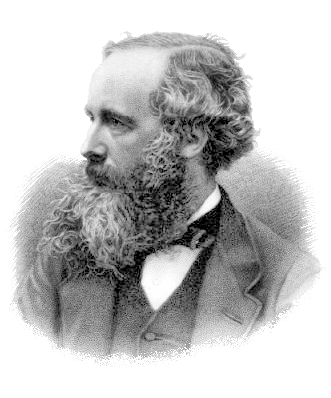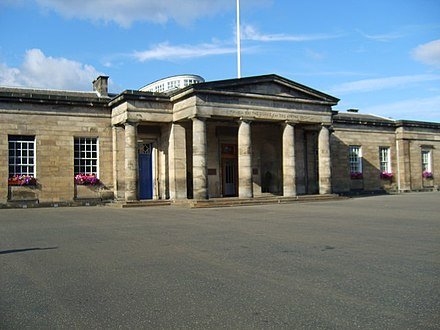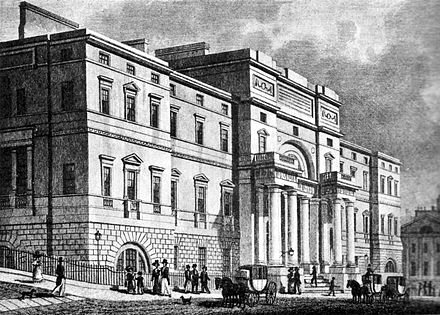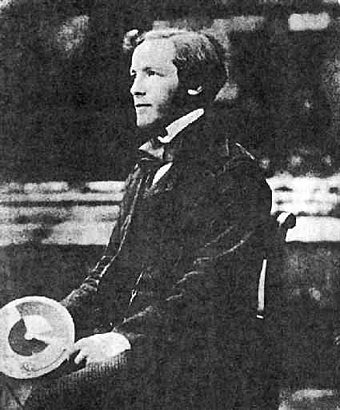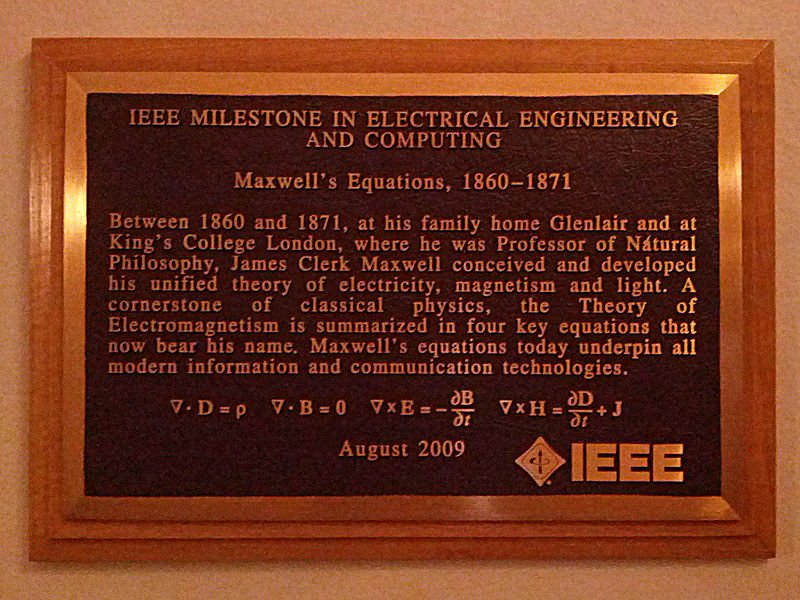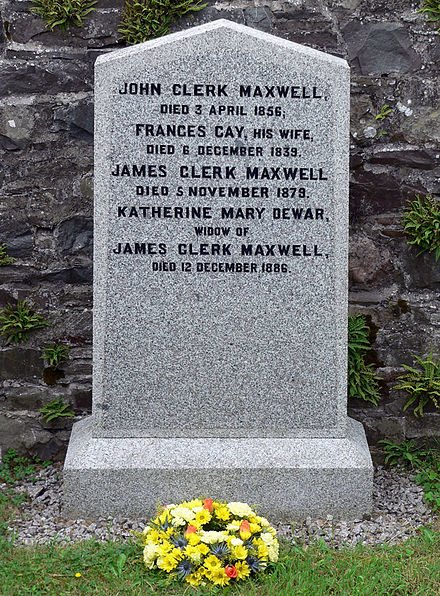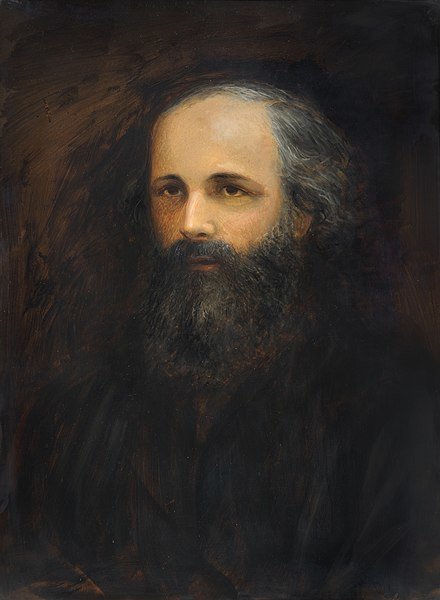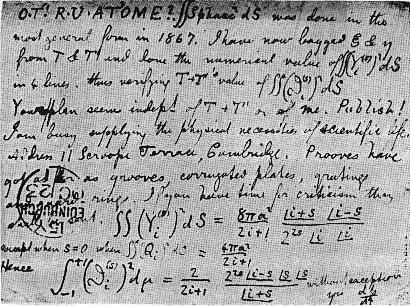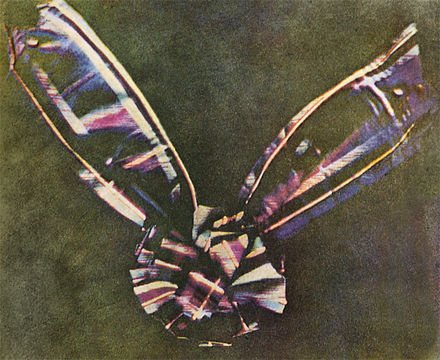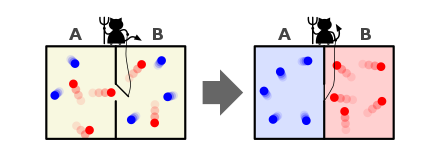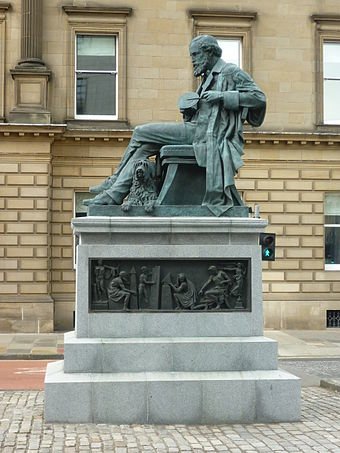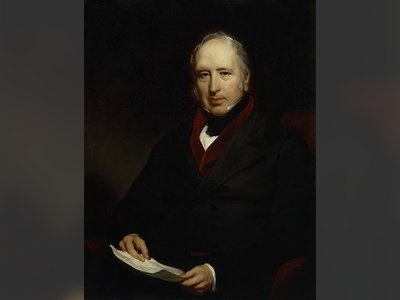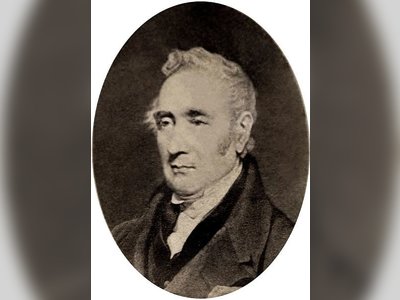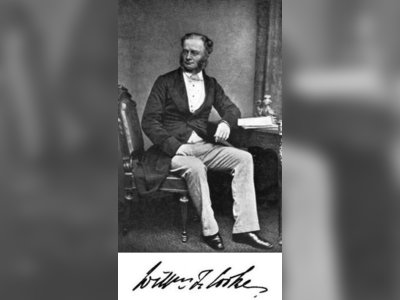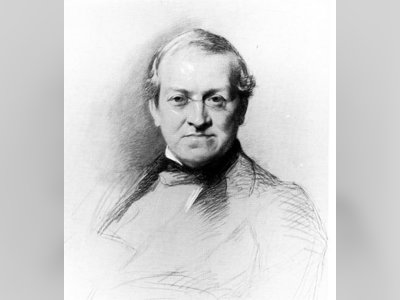British Heritage
Remember, Cherish, Learn.
beta
James Clerk Maxwell - The Theory of Electromagnetic radiation
Contribution to British Heritage.
James Clerk Maxwell, a Scottish mathematician and scientist, left an indelible mark on British heritage through his groundbreaking work on the classical theory of electromagnetic radiation. Born on June 13, 1831, in Edinburgh, Maxwell's contributions have been hailed as one of the most significant unifications in the history of physics, combining electricity, magnetism, and light as different manifestations of the same phenomenon. His theory laid the groundwork for modern physics, with profound implications for fields like special relativity and quantum mechanics.
Maxwell's equations for electromagnetism are often regarded as the "second great unification in physics," the first one being established by Sir Isaac Newton. His groundbreaking work paved the way for further exploration and understanding of the fundamental forces of nature. Furthermore, Maxwell's profound influence on 20th-century physics has led many to consider him on par with the likes of Newton and Einstein.
In addition to his scientific contributions, Maxwell is considered a founder of the modern field of electrical engineering. His insights into the nature of electricity and magnetism laid the foundation for technological advancements that have transformed society and shaped the world we live in today.
Maxwell's most significant contribution to science came with the publication of "A Dynamical Theory of the Electromagnetic Field" in 1865. In this groundbreaking work, he demonstrated that electric and magnetic fields propagate through space as waves at the speed of light. This revolutionary idea led to the unification of electric, magnetic, and optical phenomena and provided the basis for the concept of electromagnetic radiation.
With his theoretical work, Maxwell predicted the existence of radio waves, and this prediction was later experimentally confirmed by Heinrich Hertz in 1887. Maxwell's equations have since become the cornerstone of classical electromagnetism and an essential part of every physicist's education.
Apart from his electromagnetic theory, Maxwell made significant contributions to other scientific areas. He developed the Maxwell–Boltzmann distribution, a statistical description of the kinetic theory of gases. Moreover, he presented the first durable color photograph in 1861 and explored the rigidity of rod-and-joint frameworks, relevant to structures such as bridges.
Maxwell's accomplishments during his relatively short life continue to reverberate through the scientific world and beyond. His theoretical framework has had far-reaching applications in technology and engineering, enabling the development of modern telecommunications, electrical power generation, and electronic devices. Maxwell's legacy serves as a testament to the power of human ingenuity and the profound impact of scientific discovery on society.
James Clerk Maxwell was born to John Clerk Maxwell and Frances Cay on June 13, 1831, at 14 India Street, Edinburgh. His father belonged to the comfortable middle-class Clerk family of Penicuik, while his mother was from the Cay family. Maxwell displayed an insatiable curiosity from a young age, constantly questioning the world around him and exploring the hidden workings of nature.
Recognizing her son's potential, Frances Cay took on the responsibility of his early education. By the age of three, Maxwell's inquisitiveness led him to question everything that moved, shone, or made a noise. His mother's death when he was eight years old was a significant loss, but Maxwell's father and his aunt, Jane Cay, played pivotal roles in his continued education.
Maxwell's education continued at the prestigious Edinburgh Academy, where his passion for drawing was encouraged by his older cousin, Jemima. Although he faced initial social challenges due to his rustic mannerisms and accent, Maxwell found lifelong friends in Lewis Campbell and Peter Guthrie Tait, who would later become notable scholars.
By age 14, Maxwell had written his first scientific paper on mathematical curves, showing early signs of his remarkable mathematical talent. His formal university education began at the University of Edinburgh, where he impressed his tutors with his abilities in logic, metaphysics, and mathematics.
In 1850, Maxwell moved to the University of Cambridge, initially attending Peterhouse but later transferring to Trinity College. He quickly earned recognition for his mathematical prowess, and in 1854, he graduated as Second Wrangler, demonstrating remarkable skills in mathematics and physics.
Maxwell's work on the nature of Saturn's rings, for which he was awarded the Adams Prize in 1859, displayed his ability to tackle challenging scientific problems with innovative solutions. He continued to explore various scientific topics during his tenure as the Chair of Natural Philosophy at King's College, London, where he made significant contributions to the fields of electricity and magnetism.
In 1865, Maxwell published his seminal work on electromagnetism, forever changing the landscape of physics. His equations and theories laid the groundwork for future scientific endeavors, and his impact continues to be felt across disciplines to this day.
James Clerk Maxwell's contributions to British heritage, science, and engineering are immeasurable. His brilliance, creativity, and intellectual curiosity have inspired generations of scientists and engineers, solidifying his place as one of the greatest minds in the history of science.
Maxwell's equations for electromagnetism are often regarded as the "second great unification in physics," the first one being established by Sir Isaac Newton. His groundbreaking work paved the way for further exploration and understanding of the fundamental forces of nature. Furthermore, Maxwell's profound influence on 20th-century physics has led many to consider him on par with the likes of Newton and Einstein.
In addition to his scientific contributions, Maxwell is considered a founder of the modern field of electrical engineering. His insights into the nature of electricity and magnetism laid the foundation for technological advancements that have transformed society and shaped the world we live in today.
Success and Legacy
Maxwell's most significant contribution to science came with the publication of "A Dynamical Theory of the Electromagnetic Field" in 1865. In this groundbreaking work, he demonstrated that electric and magnetic fields propagate through space as waves at the speed of light. This revolutionary idea led to the unification of electric, magnetic, and optical phenomena and provided the basis for the concept of electromagnetic radiation.
With his theoretical work, Maxwell predicted the existence of radio waves, and this prediction was later experimentally confirmed by Heinrich Hertz in 1887. Maxwell's equations have since become the cornerstone of classical electromagnetism and an essential part of every physicist's education.
Apart from his electromagnetic theory, Maxwell made significant contributions to other scientific areas. He developed the Maxwell–Boltzmann distribution, a statistical description of the kinetic theory of gases. Moreover, he presented the first durable color photograph in 1861 and explored the rigidity of rod-and-joint frameworks, relevant to structures such as bridges.
Maxwell's accomplishments during his relatively short life continue to reverberate through the scientific world and beyond. His theoretical framework has had far-reaching applications in technology and engineering, enabling the development of modern telecommunications, electrical power generation, and electronic devices. Maxwell's legacy serves as a testament to the power of human ingenuity and the profound impact of scientific discovery on society.
General Information
James Clerk Maxwell was born to John Clerk Maxwell and Frances Cay on June 13, 1831, at 14 India Street, Edinburgh. His father belonged to the comfortable middle-class Clerk family of Penicuik, while his mother was from the Cay family. Maxwell displayed an insatiable curiosity from a young age, constantly questioning the world around him and exploring the hidden workings of nature.
Recognizing her son's potential, Frances Cay took on the responsibility of his early education. By the age of three, Maxwell's inquisitiveness led him to question everything that moved, shone, or made a noise. His mother's death when he was eight years old was a significant loss, but Maxwell's father and his aunt, Jane Cay, played pivotal roles in his continued education.
Maxwell's education continued at the prestigious Edinburgh Academy, where his passion for drawing was encouraged by his older cousin, Jemima. Although he faced initial social challenges due to his rustic mannerisms and accent, Maxwell found lifelong friends in Lewis Campbell and Peter Guthrie Tait, who would later become notable scholars.
By age 14, Maxwell had written his first scientific paper on mathematical curves, showing early signs of his remarkable mathematical talent. His formal university education began at the University of Edinburgh, where he impressed his tutors with his abilities in logic, metaphysics, and mathematics.
In 1850, Maxwell moved to the University of Cambridge, initially attending Peterhouse but later transferring to Trinity College. He quickly earned recognition for his mathematical prowess, and in 1854, he graduated as Second Wrangler, demonstrating remarkable skills in mathematics and physics.
Maxwell's work on the nature of Saturn's rings, for which he was awarded the Adams Prize in 1859, displayed his ability to tackle challenging scientific problems with innovative solutions. He continued to explore various scientific topics during his tenure as the Chair of Natural Philosophy at King's College, London, where he made significant contributions to the fields of electricity and magnetism.
In 1865, Maxwell published his seminal work on electromagnetism, forever changing the landscape of physics. His equations and theories laid the groundwork for future scientific endeavors, and his impact continues to be felt across disciplines to this day.
James Clerk Maxwell's contributions to British heritage, science, and engineering are immeasurable. His brilliance, creativity, and intellectual curiosity have inspired generations of scientists and engineers, solidifying his place as one of the greatest minds in the history of science.
- James Clerk Maxwellen.wikipedia.org
